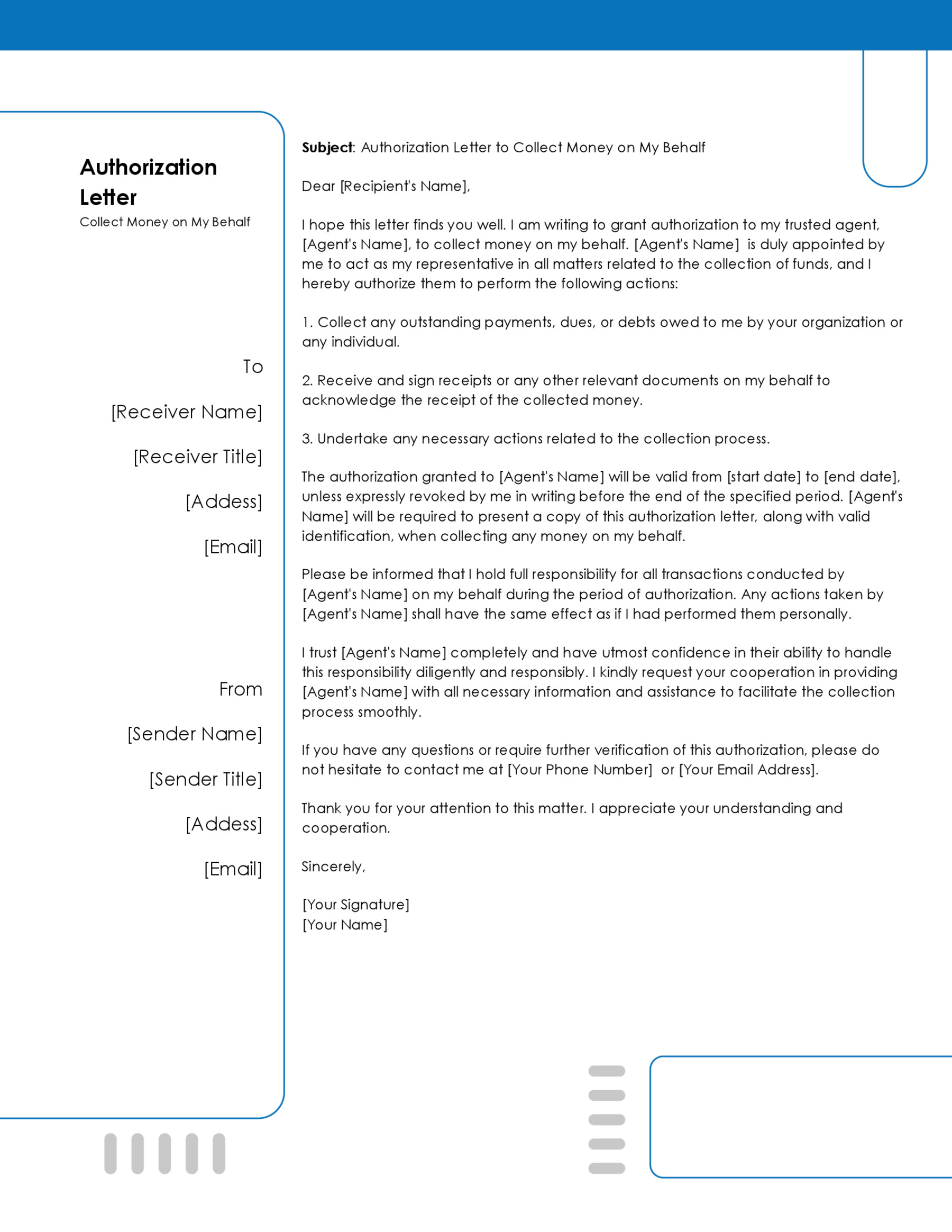A welcome letter is written to help new employees feel comfortable in their new role in a company.
This document is meant to welcome the employee as a new member of the team and will give them relevant information about their role. The letter can be given in hard copy or emailed and may be several pages long, depending on the new employee’s job description and how much information they need to know to do their job well.
Many new employees are excited to start a new job. Even if they have experience with this type of work in the past, they may not know exactly what to expect when they join your organization. Writing a welcome letter can help prepare them for their role, answer their questions, and ease the transition on their first day.
Some of the items that you can include in this letter are:
- A welcome statement
- The start date and time for the new employee
- All of the need-to-know information before they begin working
- Any onboarding schedule and orientation
- Names of colleagues the employee will need to know
- A sample of their schedule each day
- Links to all of the tools the employee will need
Providing this information will help the employee feel prepared for the first day on the job, giving them a chance to ask questions and learn more about the position ahead of time.
Welcome Letter Templates
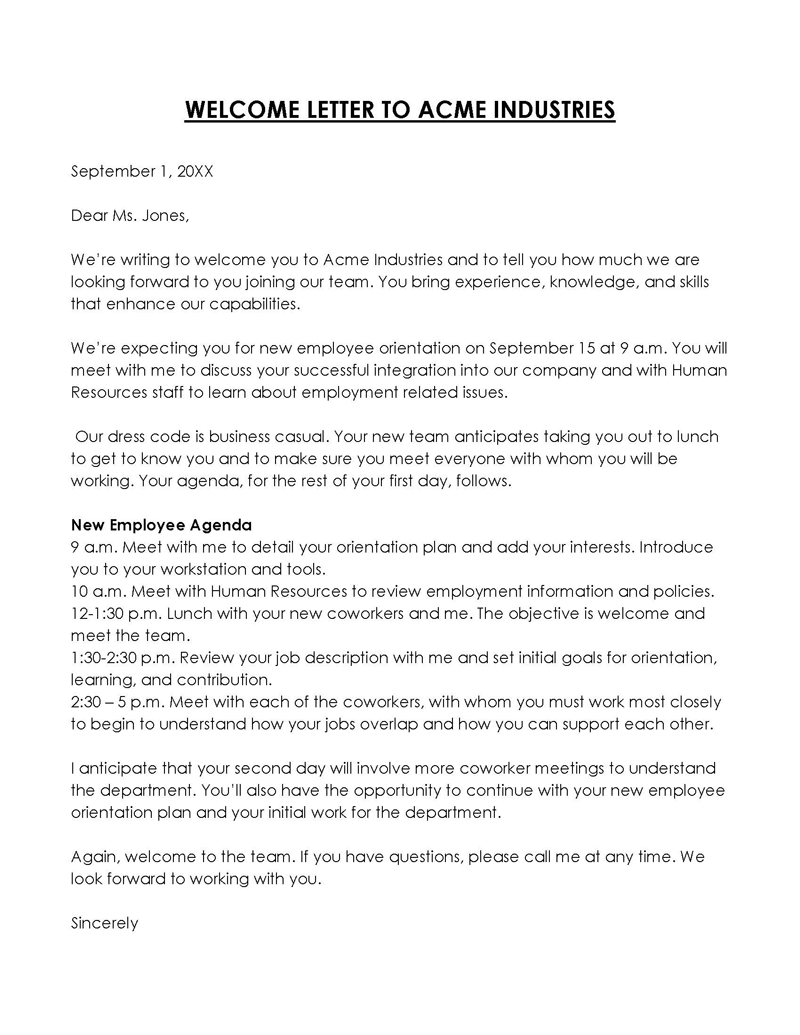
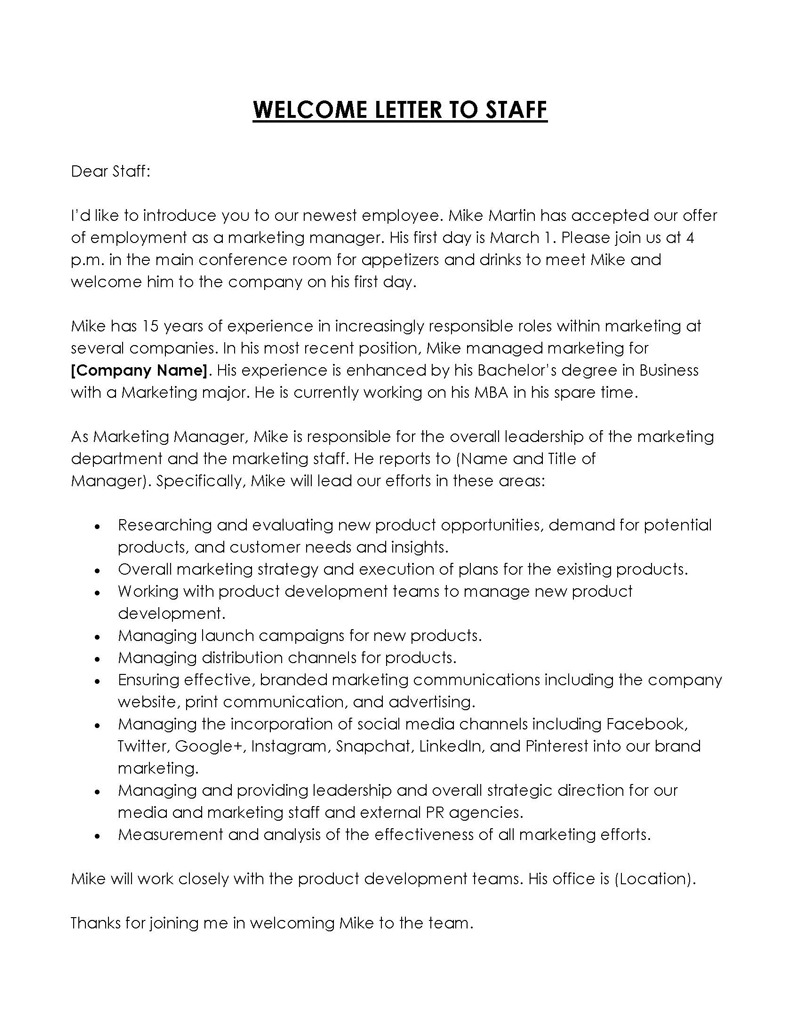
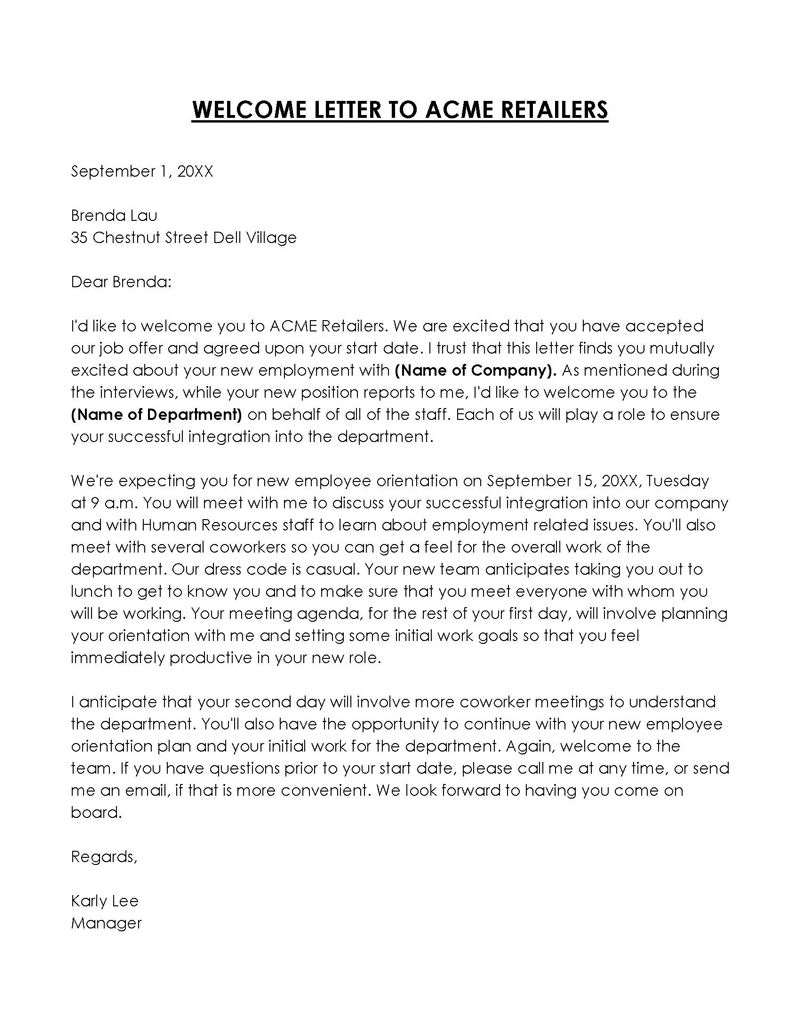
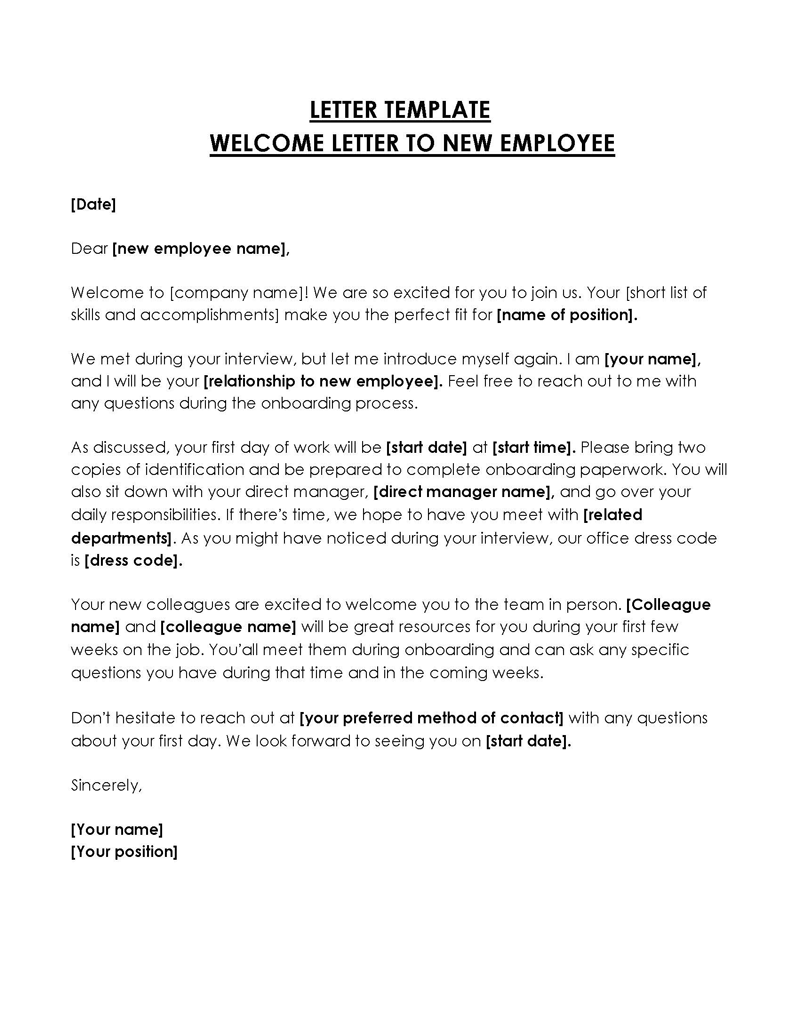
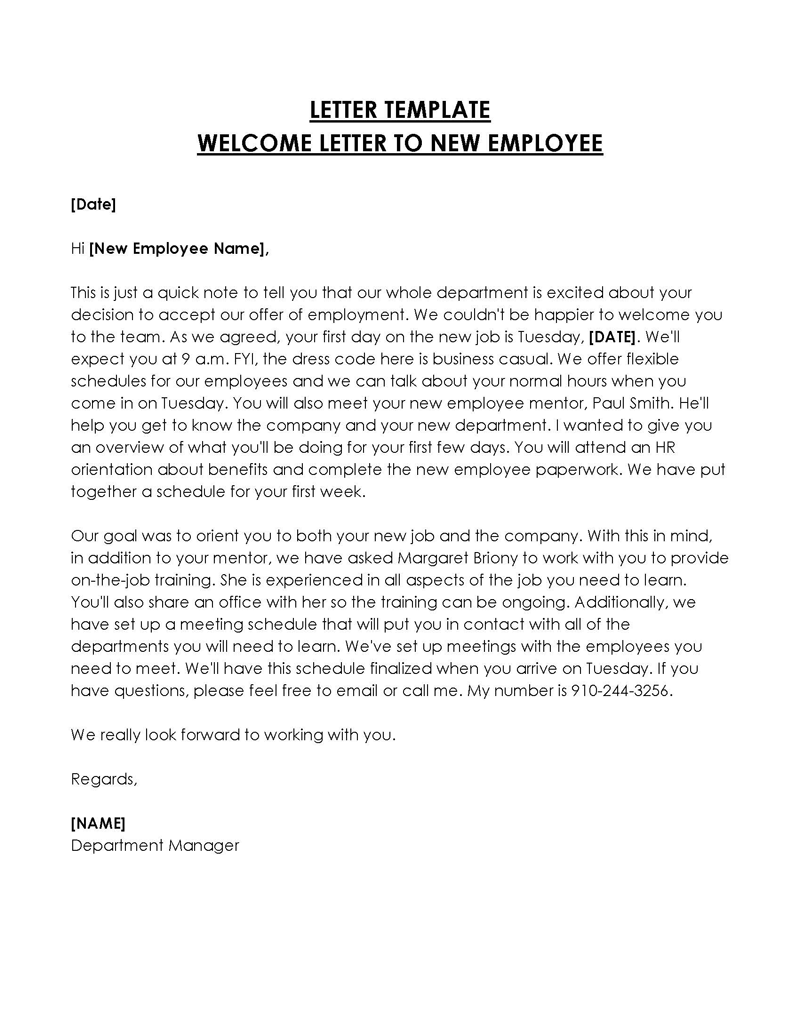
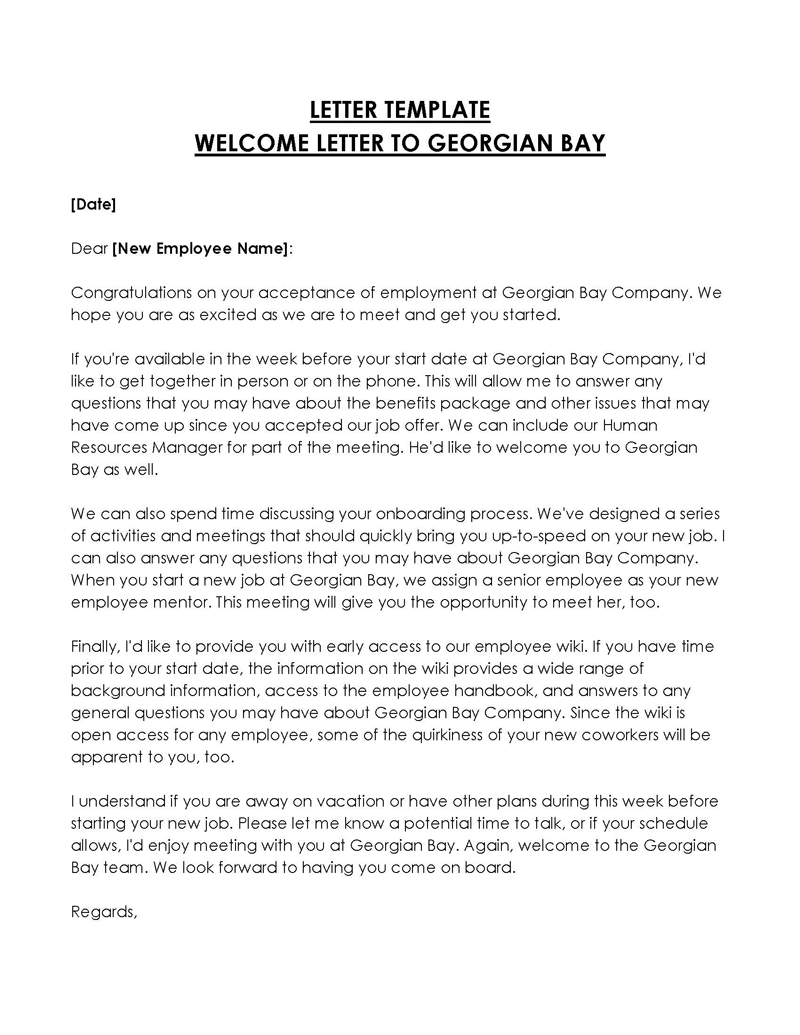
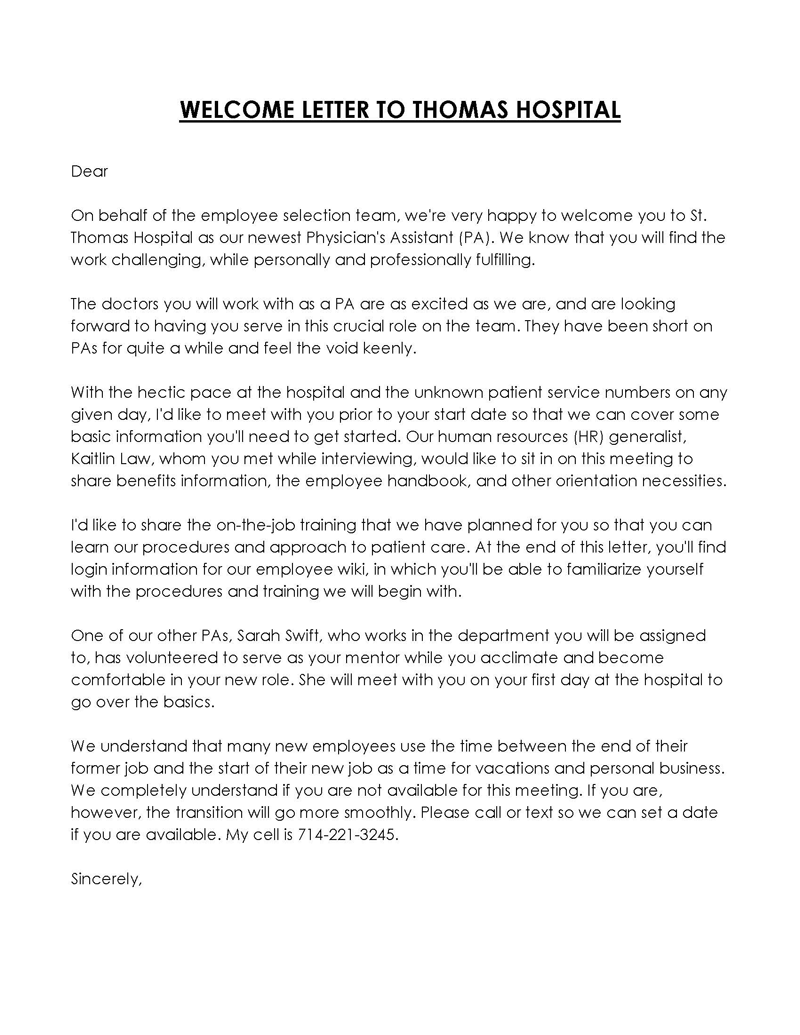
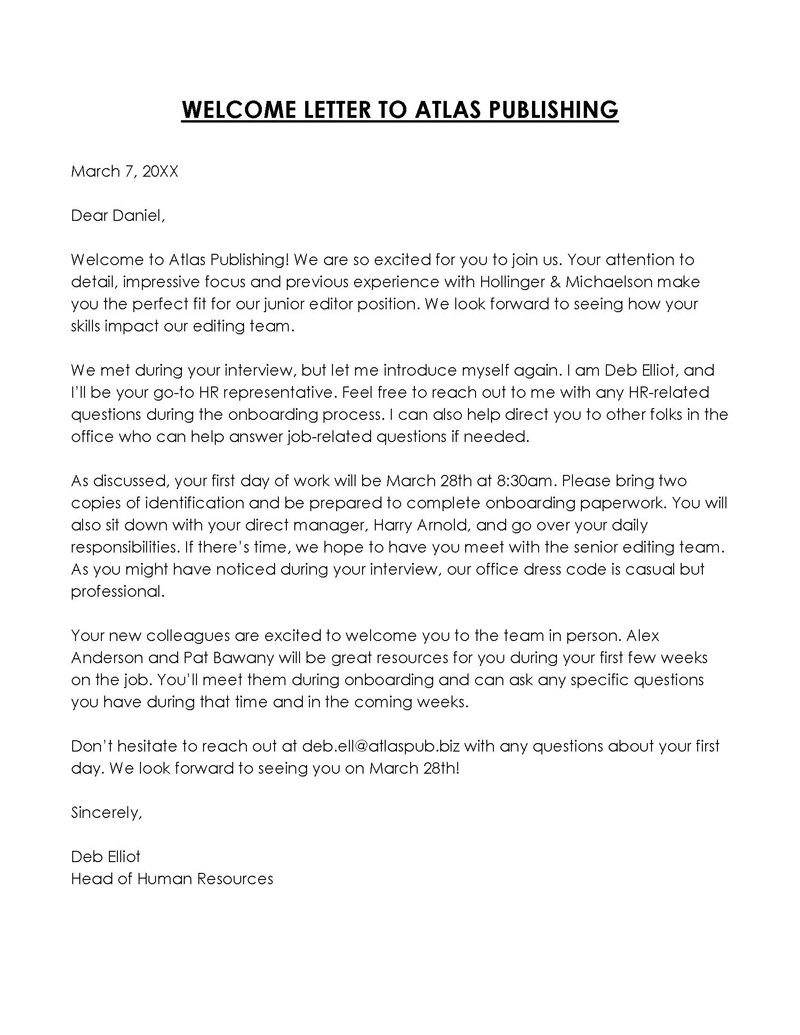
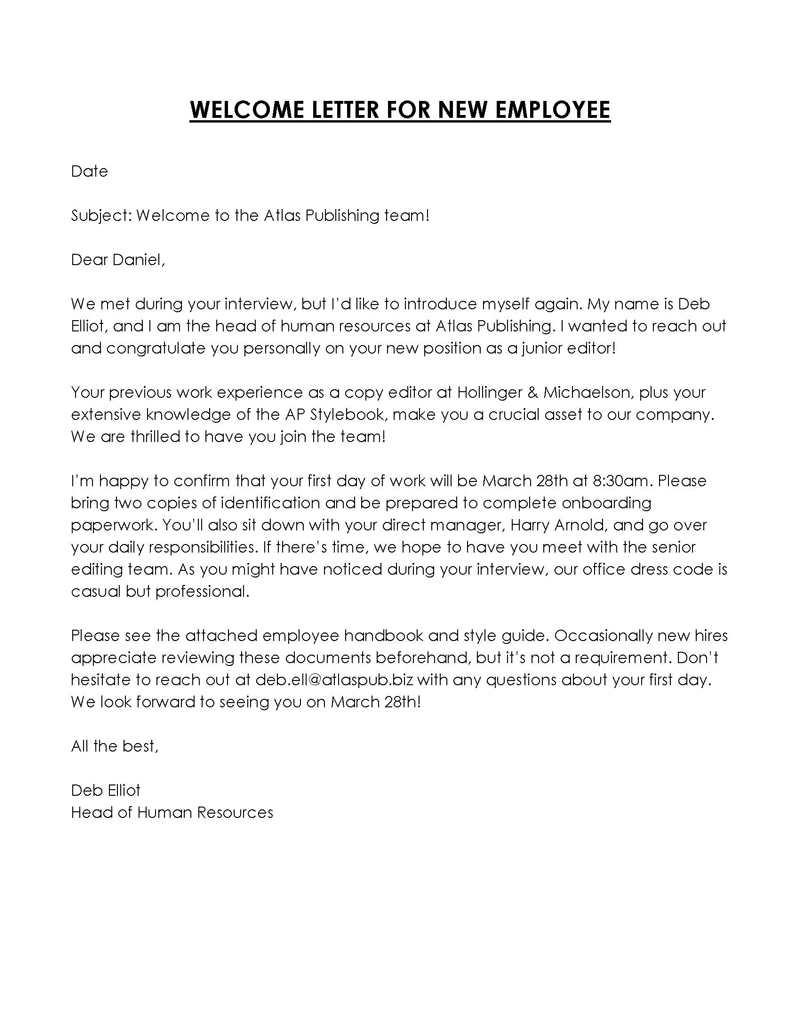
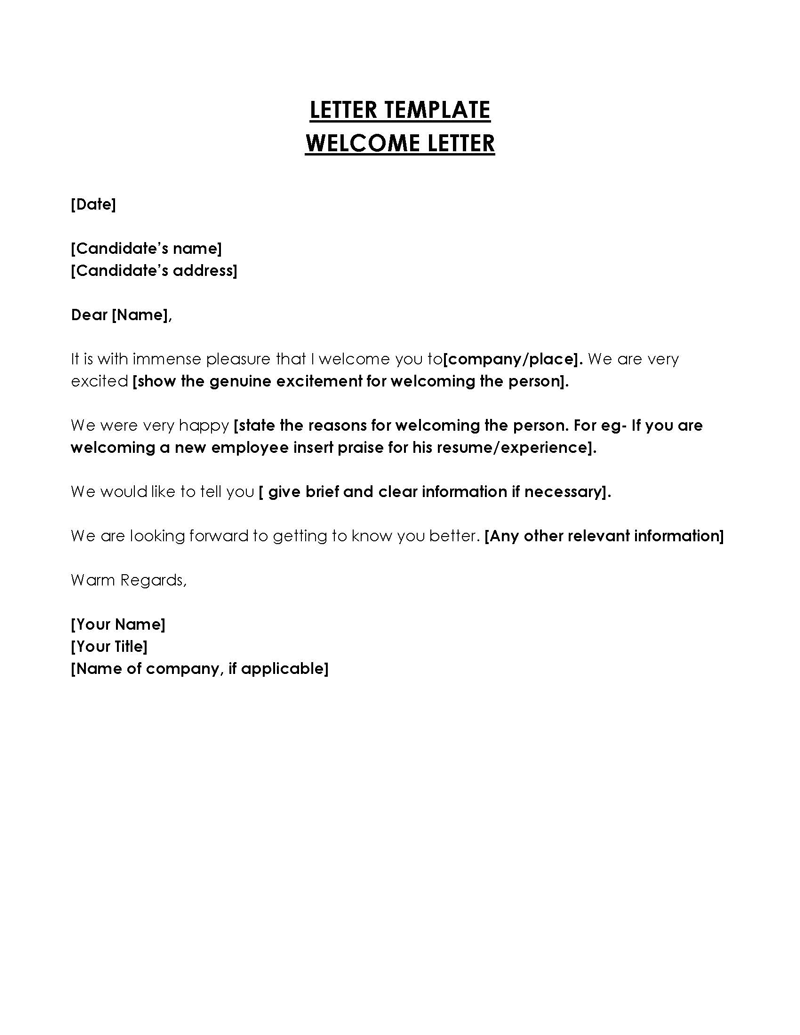
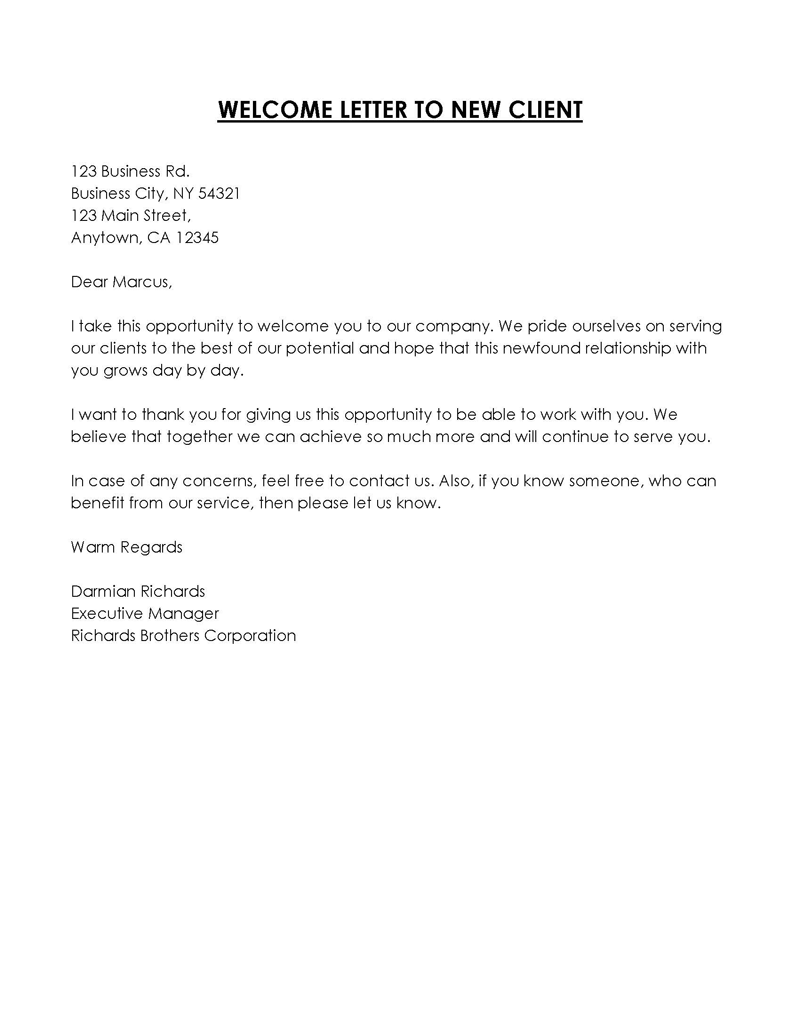
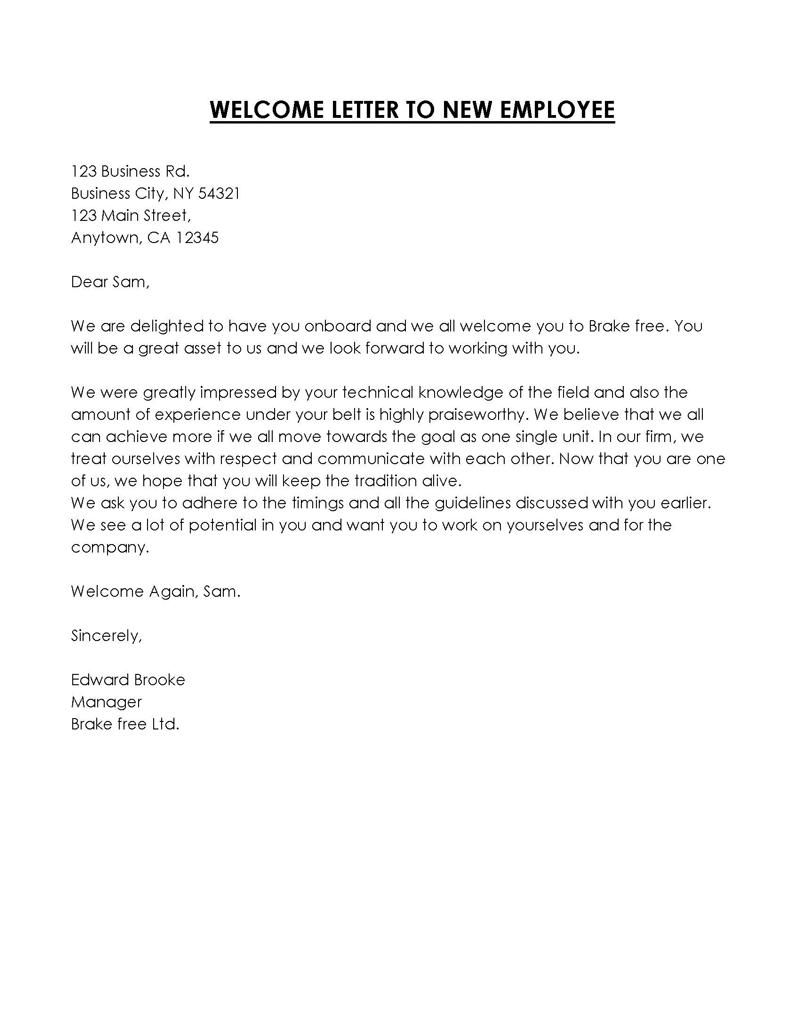
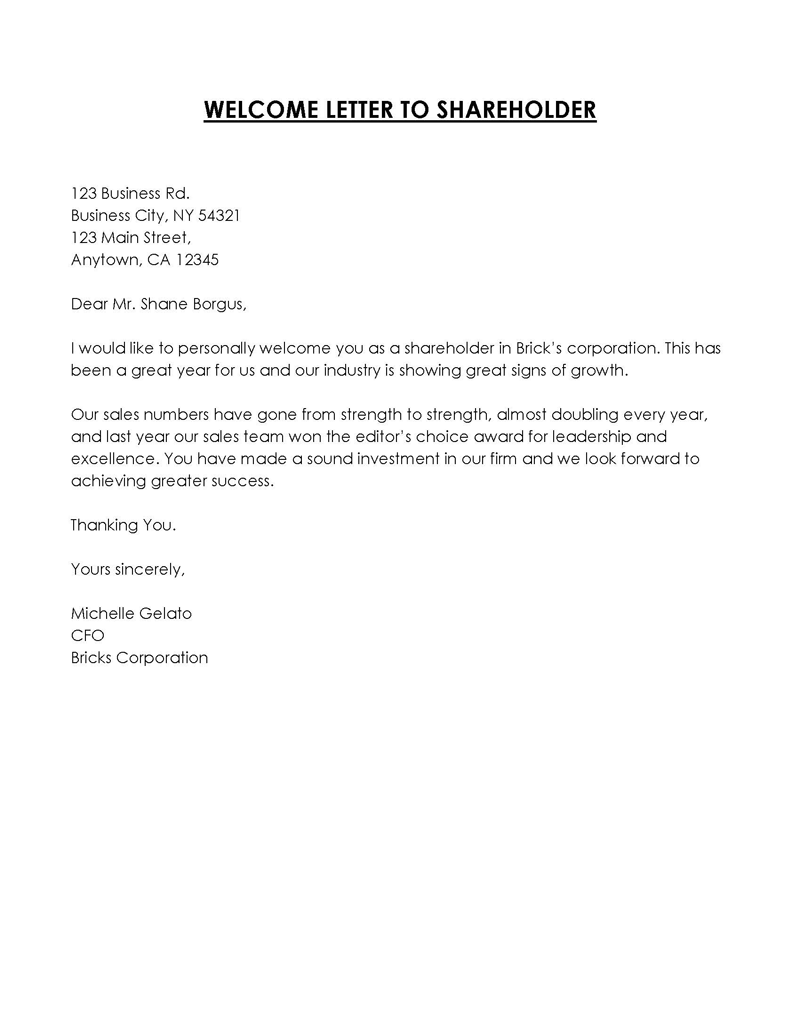
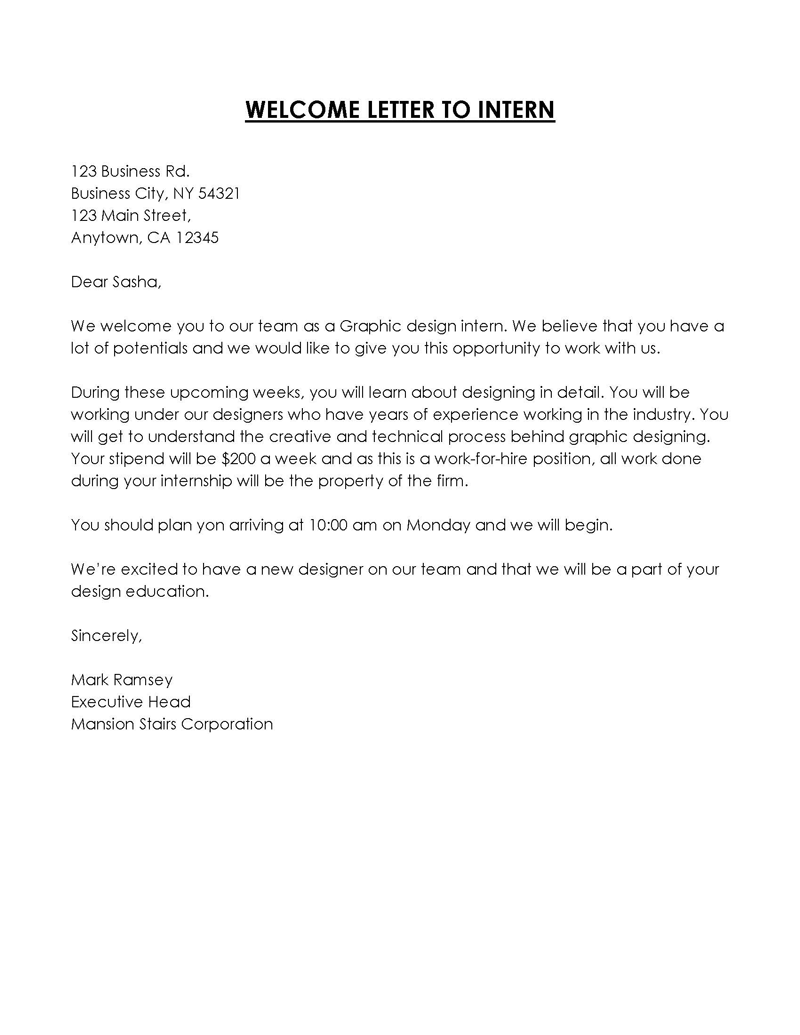
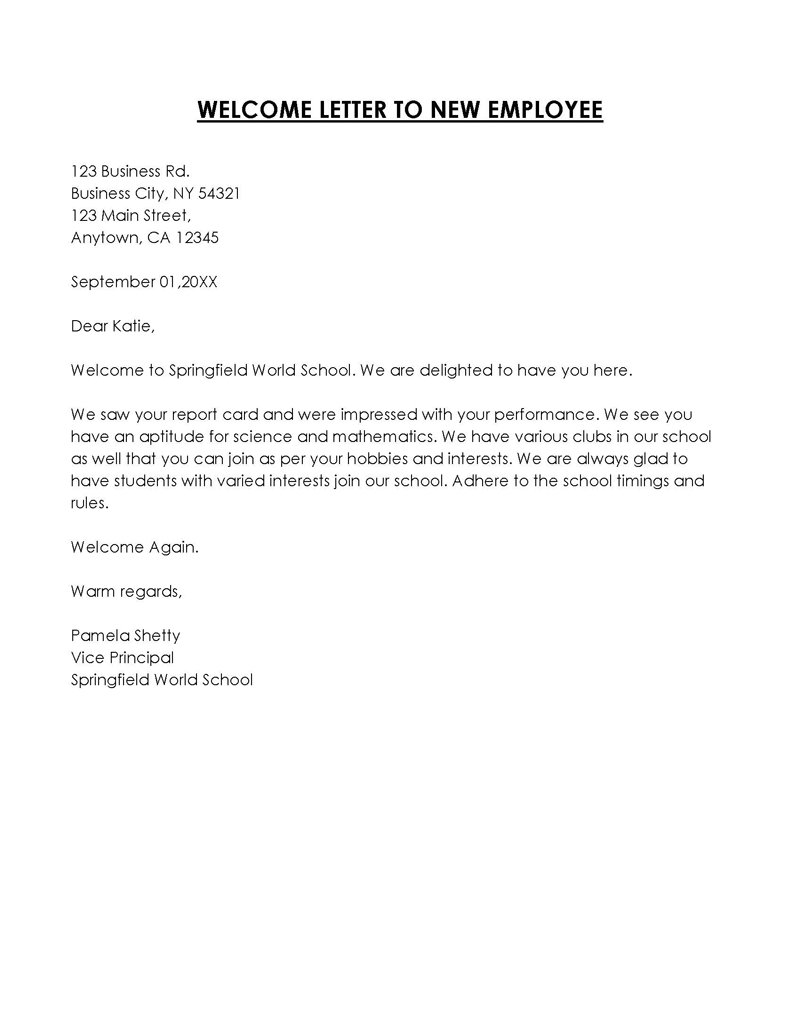
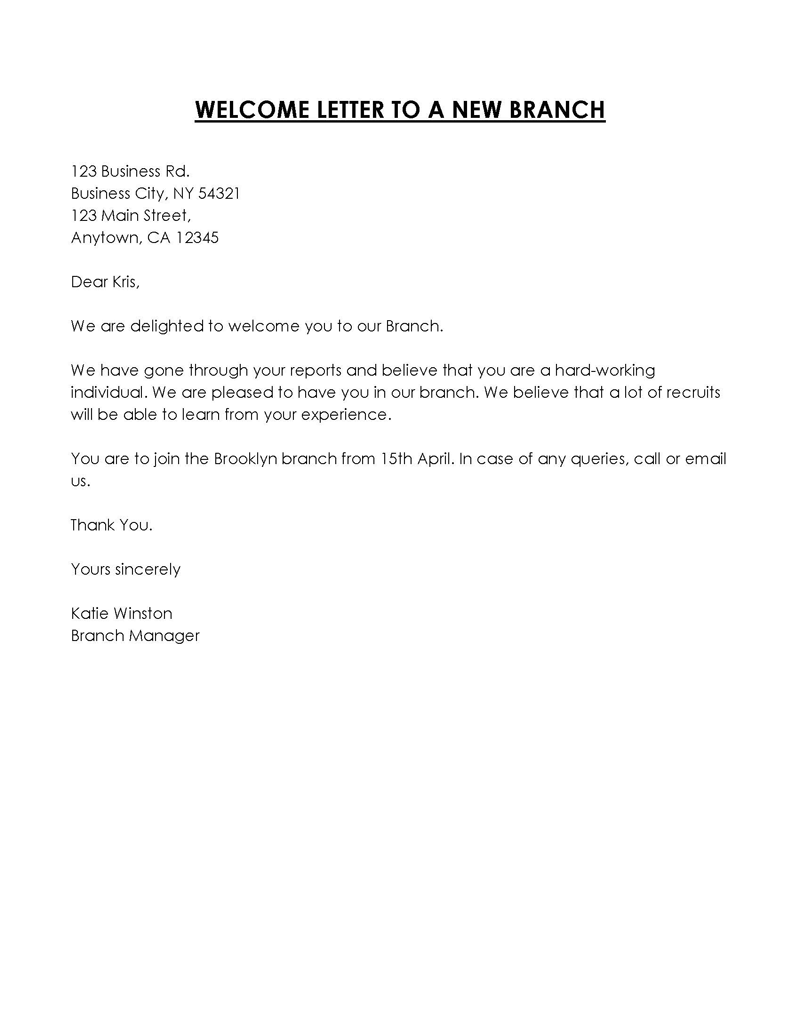
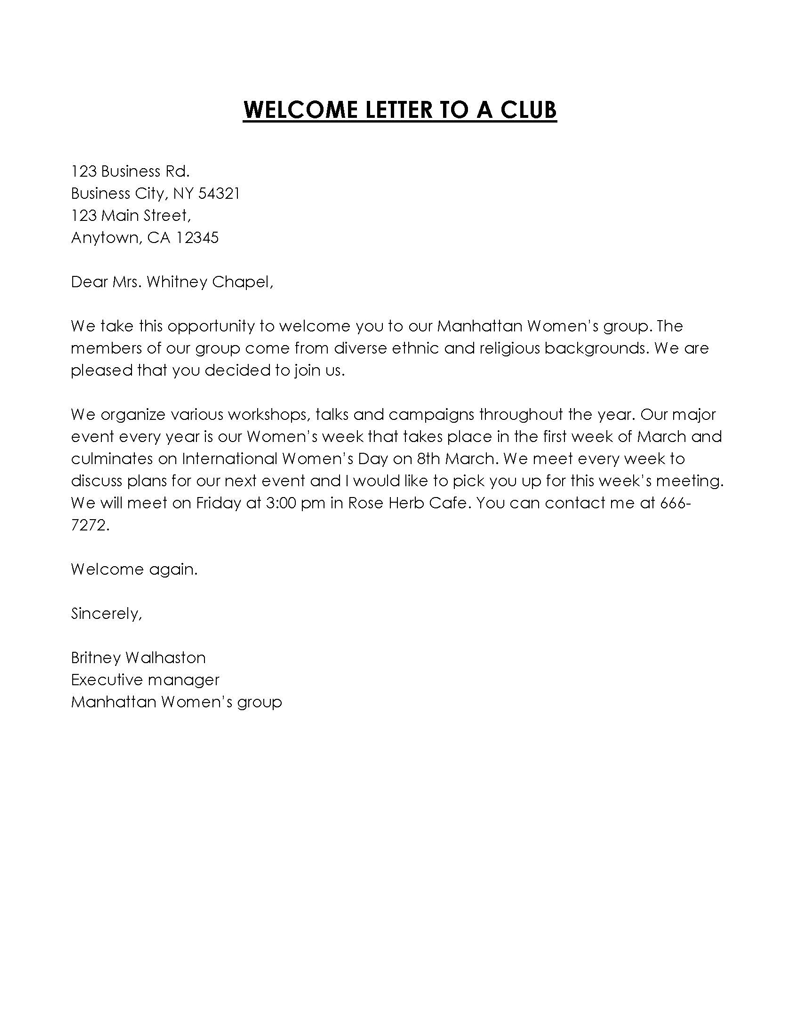
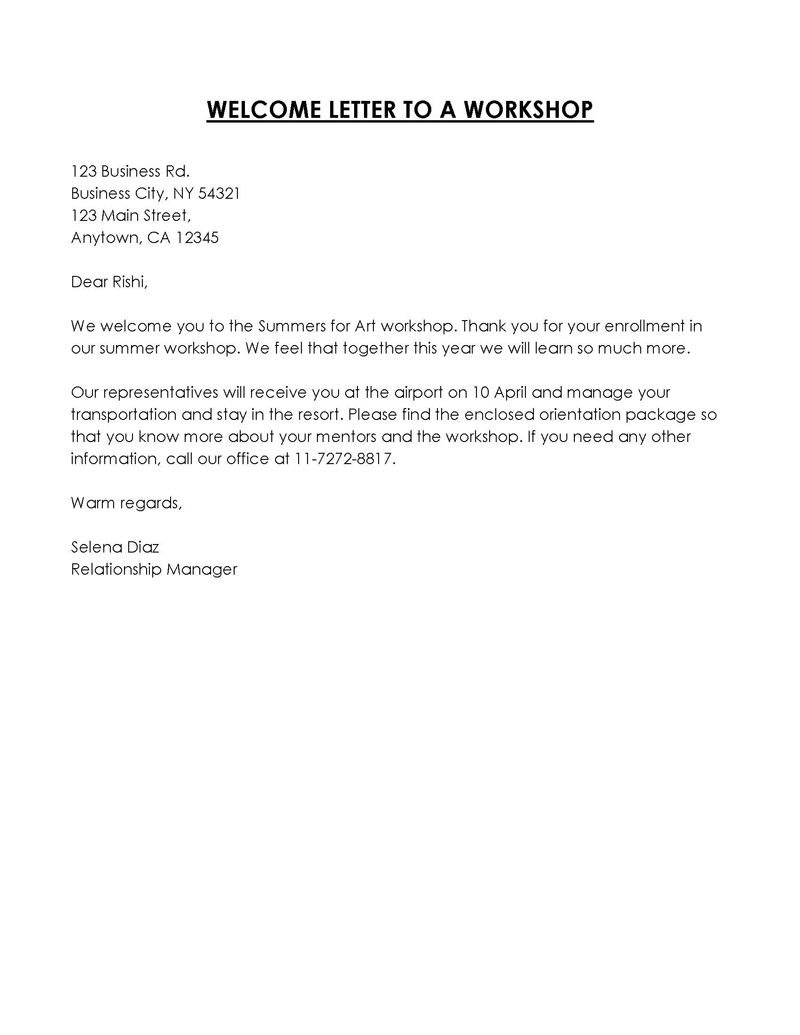
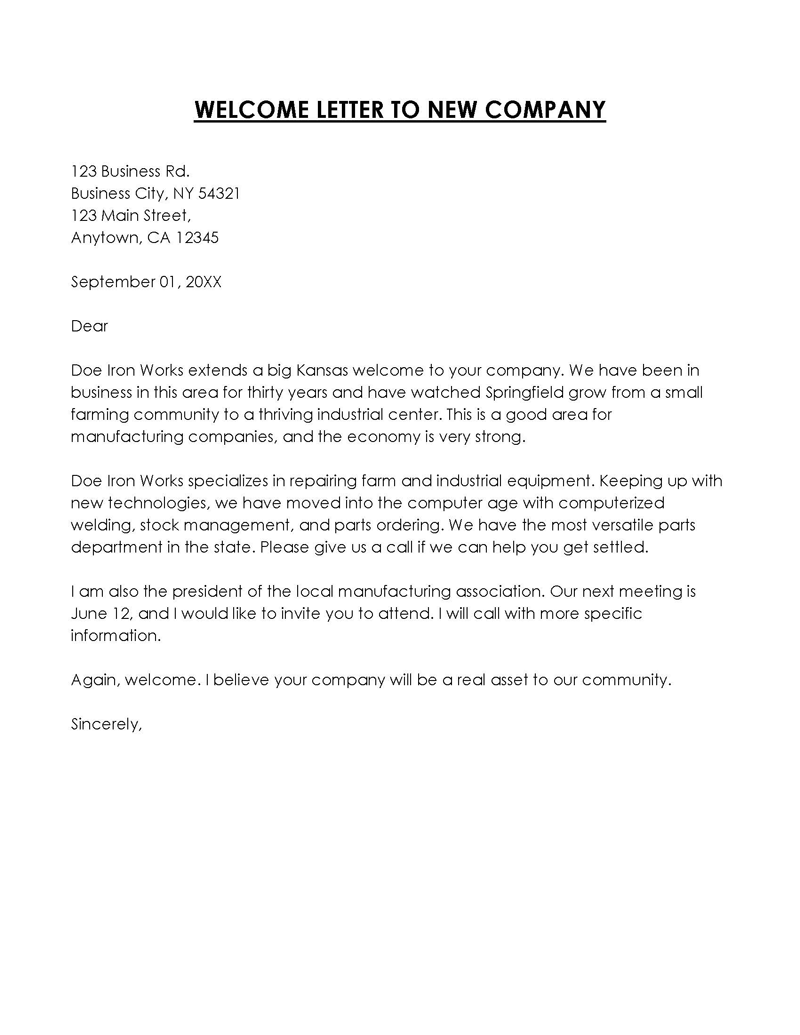
Why is a Welcome Letter Necessary?
A well-written welcome letter will ease the anxieties of new employees on their first day of work. It could include information about the orientation and onboarding procedures, as well as any other pertinent information that a new employee may require. When possible, the HR team should personalize the letter, including the actual name of the new hire and the specific reasons they were chosen for the position.
Such a letter can benefit both you and the new employee. It helps the new employee feel that you care about their well-being at the office and want to be there to provide them assistance and help in their new role. It also conveys important information to help the employee on their first day at work. New employees will have many questions about when they should start the work day, who they will report to, and other information that they will need to have a successful first day.
These letters are more personal and warm because they will be less formal than contracts or appointment letters while still providing the employee with the important information they need. These letters are not only informative but also a nice gesture to help the new employee feel like a part of the organization.
How to Write a Welcome Letter: Step-by-Step Guide
Before you begin writing the letter, you should know that it can either be very simple or very complex. Some companies choose to send a basic letter that welcomes the employee and informs them of the date and time when they should report for work. Complex letters are more detailed and include orientation schedules, login credentials, information on colleagues, and the employee handbook. With the right tools at your disposal, writing the perfect welcome letter for your new employees is easier.
Some of the steps to consider when writing this letter include the following:
Step 1: Determine your goals and create an outline
The first step is to consider what you would like to say in the letter. Some of these letters will be really simple, maybe a page long, welcoming the new employee to your business and letting them know you are excited to see them. Other letters will be more in-depth, giving the employees information they need to know to start their job.
Before writing the letter, think about its contents. Creating an outline can be a good idea if you need to convey a lot of information and want to ensure that you do not miss anything.
EXAMPLE
Think about what your new hire would need to do on their first day at work. Your outline could include orientation information, supervisors’ names, the time and date to report for work, and any other information that will help the new employee on their first day.
Step 2: Write a welcome statement
With the outline ready, it is time to write the letter for your new employee. A simple “Congratulations and welcome to the team” can be a good opening line; it doesn’t have to be complicated. As opposed to merely writing a standard letter devoid of emotion, doing this helps to convey your excitement and can give the employee the impression that you value their inclusion in the organization.
EXAMPLE
“Congratulations on getting the job as Director of Information Technology at Brookings Hospital. We are excited to welcome you to the team!
Step 3: Introduce yourself
Tell the new employee who you are and why you are contacting them at this time. Often, the head of the HR department or someone in a similar position will write this. Mentioning your name and title can help dispel any confusion. You can include other information, such as whether the new employee should contact you or someone else when they have any questions.
EXAMPLE
My name is Margaret Thames, director of HR. While you will meet your supervisor, Jordan Spies, on your first day, I am always happy to help answer any of your questions, and I hope you will not hesitate to contact me at any time.
Step 4: Provide basic need-to-know information
This section of the letter can be detailed or brief, depending on the job description of the new employee. Sometimes you will just need to welcome the employee and tell them where to report on the first day. Other times, you may need to provide details about orientation, where to meet, login credentials, finding the building where they will work, employee expectations, the dress code, etc. Consult the outline prepared earlier to determine what information to include in this section of the letter.
EXAMPLE
For your first day of work, report to Room 203 at our main offices, located at 987 N 8th St., Brookings, SD 57006. Mr. Spies will be there to meet you, work with you through orientation, and answer any of your questions. We request that you bring your driver’s license and another form of ID so we can complete the necessary tax documents and get your paycheck information ready from the start. You will then have a chance to meet other members of the team and learn more about your daily schedule.
Step 5: Include a reminder of the employee’s start date and time
At some point in the letter, take the time to remind the employee about the start date and time. This is something that should have been discussed with the employee during the hiring process, but it is nice to mention it again to make things more convenient for the employee.
EXAMPLE
As a reminder, your joining date is July 15, 2022. We request that you arrive by 8 a.m. to begin the orientation session.
Step 6: Add other information
This is the place to include any additional information that the employee needs to know in order to begin working in the position. Again, explain all details as accurately as possible to ensure the employee is well prepared and excited about their first day of work.
There is a lot of information you can include in this part of the letter. Let the new hire know about their orientation schedule, the names and positions of any immediate colleagues they will need to work with right away, and a sample of their daily schedule, so they know more about what to expect when they come to work the first day. In addition, consider giving them links to other information that could help them answer their questions, such as links to any employee resources you have, such as the employee handbook, and all onboarding forms so the employee can complete them before starting work.
EXAMPLE
While I am always available to answer any questions, I am happy to provide links to our employee handbook and benefits package. I hope you will have the time to look through it all and ask any questions if you have any concerns.
Step 7: Conclude the letter
You can wrap up the letter when all of the necessary details are provided. A welcome letter can be effectively concluded with a simple “sign-off” that includes your name and position once more. Follow the industry standards and end on a professional note.
EXAMPLE
We are excited to have you as part of our team. Welcome again, and see you on 15 July!
Sample Welcome Letter
Below is a sample welcome letter you can use as a guide for writing your own:
sample
Dear Alex,
Congratulations and welcome to the team!
My name is Emily Johnson, and I am the Head of Human Resources here at Bright Future Tech Solutions. I am reaching out to you to ensure a smooth transition as you join our innovative team. Should you have any questions or need assistance, feel free to contact me or Marcus Lee, our Employee Relations Specialist.
As you prepare for your first day, there are a few key things you should be aware of. Your official start date is January 10, 20XX, and we expect you to report to our main office at 456 Progress Avenue by 9:00 AM. Please dress in smart casual attire, and you will be guided to your orientation session upon arrival.
During orientation, you will receive important information about your role as a Software Developer, including login credentials and essential company policies. It is an excellent opportunity to familiarize yourself with our workplace culture and expectations. You will also meet with Linda Harris and Raj Patel, Senior Developers, who will be closely working with you.
Furthermore, we have arranged a sample schedule for your first day to give you a better idea of what to expect. You can find links to our employee handbook and all necessary onboarding forms at [www.brightfuturetech.com/employee-resources]. We encourage you to review these documents and complete the forms before your start date.
In conclusion, we are thrilled to have you on board and look forward to your contributions to Bright Future Tech Solutions. Your skills and talents will be a great addition to our team.
If you have any questions before your start date, please do not hesitate to reach out.
Welcome aboard!
Sincerely,
Emily Johnson
Head of Human Resources
Bright Future Tech Solutions
Key Takeaways
This letter serves as a useful guide for crafting similar welcome letters. Here’s why:
- The letter starts with a congratulatory note, immediately creating a positive and welcoming atmosphere. This sets a friendly tone, which is crucial in making a new employee feel valued and excited about their new role.
- The writer introduces herself and her role clearly, providing a point of contact for the new employee. She also mentions another contact, offering additional support. This approach helps the new employee know whom to reach out to for different kinds of assistance.
- The letter includes specific details like the start date, time, office address, and dress code. Such information is crucial to helping the new employee feel prepared and less anxious about their first day.
- By mentioning what to expect during orientation, including meeting key team members and learning about essential tools and policies, the letter helps set expectations and demonstrates that the company is well-organized and considerate of a new employee’s needs.
- The letter provides information about where to find the employee handbook and onboarding forms. This proactive approach to sharing resources ensures that the new employee can access necessary information easily and feel supported.
- The closing paragraphs reiterate the company’s excitement about the new hire, emphasizing their potential contribution and value to the team. This not only boosts the new employee’s morale but also reinforces their decision to join the company.
- By inviting the new employee to reach out with any questions, the letter fosters an open line of communication, which is key to a supportive work environment.
Frequently Asked Questions
It is best to send the letter as soon as a new employee is hired. This may still take a few days before it reaches them. Sending the letter immediately helps establish a great line of communication between you, the employer, and the new employee from the beginning.
The welcome letter can be signed either by the president or the CEO of the company, or even by the person who is in charge of hiring at the time. Consider your company’s organizational structure to decide who would be most appropriate to sign this letter.
Many companies will send welcome letters to new employees through email. This helps get it to the employee quickly and can save time. If you do not have the email address of the new hire, you can also send it to them by mail.











